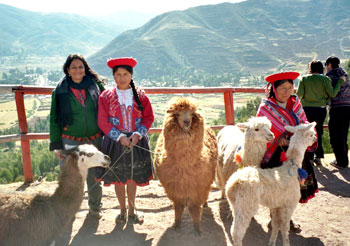
Arthur J Pais is captivated by mysterious, magical Peru.
"You will understand why this river is so sacred to us," says a guide as he surveys the Rio Urubamba in Peru's Sacred Valley. "Americans don't understand. They have no sacred rivers. But in India you have the Ganges."
Peru -- one of the most dramatic countries in the world -- has been attracting Indian tourists not only from Canada, America and the United Kingdom, but also from India. There are no numbers available but during my fortnight's travel across the rugged country, I came across at least 200 Indians.
"Are you Indians from Canada and America or from the UK?" the owner of an Indian restaurant asked my wife Mabel Elizabeth and me. She said Indians love the greenery in Peru, enjoy the excellent bus services and love the palatial churches and ruins.
"Everyone loves Peru," the owner of the Maikhana restaurant in Cusco says. "But Indians also love it because the sauces here are very hot. We grow over 100 varieties of chillies in this country."

Once the land of gold and sun-adoring Incas, Peru was the crown jewel in the Spanish colonial crown in the 16th century. Much of the country's gold was pillaged by the conquerors who converted the Incas to Catholicism with strong arm tactics. The country, which was ravaged by the sturdy campaign of the Maoist Shining Path guerillas for a decade, ending in 1995, is still a struggling country.
"We are like India," says an Arab Christian who has made Peru his home for 15 years and has learned to feel like a Peruvian "We were looted mercilessly."
After the bloody Maoist rebellion was brutally suppressed, tourists are flocking to Peru, enjoying its Amazonian forest, studying its colonial architecture, hiking in the breathtaking heights of the Andes, and heading for the immense Machu Picchu citadel and the jungle surrounding it.
'Many countries claim to be geographically diverse,' writes travel expert Carlos Sala ' but Peru -- with its lush tropical rainforests, the world's second highest mountain range, windswept desert and urban sprawl -- is among the most varied and appealing of them all.'
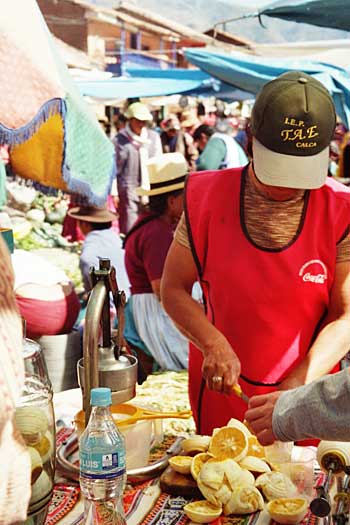
In the capital Lima, the Iglesia de San Francisco (Church of Saint Francis), painted with lovely lemon yellow hues, also has vast catacombs with the skeletal remains of some 75,000 people.
Lima's restaurants offer a wide variety of international food but you will be constantly reminded that Peru is the birthplace of the potato -- and also a country that loves corn.
Corn and potato fritters, and scores of potato dishes are served across the country. They are washed down with a pisco sour, a blend of local brandy, lemon juice, egg whites, sugar and bitters.
The Amazon is reached by an hour-long flight from Lima and is a region that should be explored by itself. Even as tourist literature reminded my wife and me that travelling down the Amazon by boat into the jungle feels like an out-of-body experience, we said we would do it the next time.
I have met young travellers who have spent over a month in the Amazon belt; they have fished for piranha using chunks of raw chicken, they have volunteered in the clinics run by missionaries in the remote villages and walked on the canopies high off the ground and taken the boat rides in search of pink dolphins.
The magical landscape of Lake Titicaca, shared by Peru and Bolivia, is unforgettable. Living with the local people in the rugged town of Amantani and watching the sun rise across the immense expanse, and viewing the serene waters of the lake is other-worldly. Several floating islands, basically huge rafts built out of reed and firmly anchored, beckon hundreds of visitors. About 500 people live on the islands.
"Most of our young people do not want to live on these islands," says the tourist guide whose father sent him to the nearby city of Puno when he was eight. "I am making a good living because I studied in a college and read a lot on our history. But the young men and women from these floating islands are often spoiled by the cities."
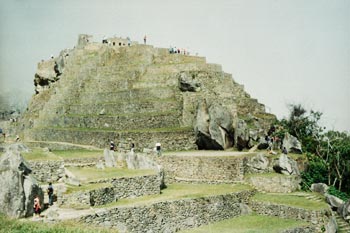
Did I say Peru is a rugged country? Even in the city of Cusco, gateway to the mysterious and magical Machu Picchu, there is plenty of heights to be negotiated.
Machu Picchu can exhaust anyone who is not a good hiker. And like much of Peru, it too can induce altitude sickness. Even those who have hiked in the mountains in America or elsewhere could feel breathless during the first few days.
"I thought I would not have to worry," said an Indian tourist. "I grew up in the hill stations in India. But I needed to rest here for a full day because of altitude sickness."
Peruvians urge tourists to drink plenty of coca leaf tea (derived from the same plants used to make cocaine; but the drink is legal). They drink plenty of this tea and chew the tobacco leaves.
Many Indian families we met were addicted to freshly-cut lime. "I have handled the altitude sickness very well thanks to lime juice," said an Indian tourist from Colorado. "But I don't think I have the stamina to do the Inca trail."
The trail, which experienced climbers negotiate in four to five days of rigorous climbing and walking, covers one third of the Sacred Valley and leads through spectacular landscapes to Machu Picchu. It is the classic and spectacular way to arrive at Machu Picchu.
But timid and time-conscious travellers take the train which rumbles through awesome scenery. "The route reminds me of train travels through the ghats in India," an Indian doctor on the train tells me. "But here the destination matters." The train runs between Cusco and Machu Picchu. Both locations offer splendid vistas and monumental sights. "Destinations, destinations, destinations," says my new Indian friend.
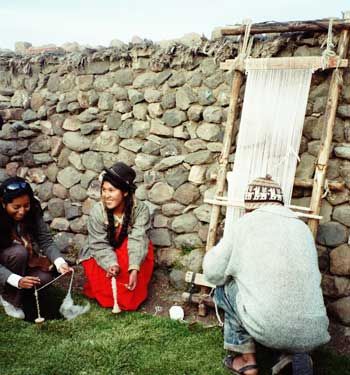
"Mister, how do you like Cusco?" asked a girl of may be eight or 10, as she flashes a few trinkets at me.
It was the end of the day, and my wife and I were tired of hiking for many hours and visiting a few massive churches in the Peruvian city.
I was not in a mood to oblige the little girl, never mind how captivating her voice was.
"Hey Mister, where are you from?"
"From Pakistan," I said.
The girl, who like most of the young vendors in the touristic city, spoke tourist English.
"No, no, no," she protested. "I know you are from Nova Delhi," she continued, beckoning another young girl who was getting her picture taken by a tourist (for about $1) with a llama. I learned later they were sisters.
They chorused: "We know you are from India." And without a warning they burst into a song from Kabhi Khushi Kabhie Gham. Singing Bole Chudiya with gusto. Singing with very good diction. And dancing as they sang.
I did not buy anything from them, but I gave them $1.
"Hey Mister," said the second girl, "you know Shah Rukh Khan?" and looking at my wife, "Madam, you like Shah Rukh?"
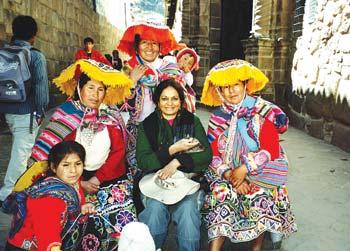
During the two-week sojourn across Peru, Shah Rukh became our constant companion. In a massage parlour, I got an extra massage when the young women who ran the shop realized I was from India. My wife was offered free hair styling, if she could teach the young women 'Hindu' dancing (in Peru, anything Indian is called Hindu). The women stopped playing Spanish music and switched on to the sound track of Kal Ho Naa Ho.
They admitted they liked Hrithik Roshan too, but almost in a chorus, they said, "Shah Rukh is almost like the best men in Peru. No, no, he is more good than our own men. He is handsome, but he is also simple. He do nothing bad."
An elderly woman at the massage parlour said she has seen many Raj Kapoor films and she likes the new Indian films too. But she thought the younger women in the shop were 'loco.'
"They are crazy," she said. "They want to marry Shah Rukh."
One of the women blushed a bit, but she also started humming a song from the Shah Rukh and Kareena Kapoor starrer Asoka.
"Indian men good chest," she said, showing me the bare chested picture of Shah Rukh on the DVD cover of the film.
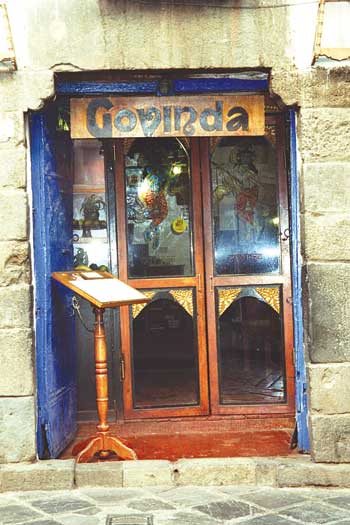
I was expecting people to ask me about Slumdog Millionaire. After all, the film had done very good business in Peru, a country not known particularly for moviegoers. It had grossed over $600,000. Of course, in Lima and a couple of other cities, younger men and women, mostly college students, had quizzed me about the film. They had asked me about the monkey god, they had asked me about religious conflict in India, and about Bollywood.
But whoever expected Peruvians across the country to be in love with Shah Rukh and Bollywood?
Movie theatres in Peru, a country of some 20 million, did not show Hindi films. But Spanish subtitled Hindi films were available on pirated DVDs not only in Peru but also in Bolivia, the other Andean country we visited.
I could not get a satisfactory answer about how the Bollywood craze had caught on and how much Bollywood was losing because of illegal screening of its movies.
A young woman said her father who had Indian friends when he worked in Patterson, New Jersey, 20 years ago, had acquired a taste for Hindi language movies.
"He said he liked the way men and women danced and cried in Hindu movies," she said. She was a college going kid. She confessed she too loved the 'Hindu' movies for the same reasons her parents watched them. "And the women are more beautiful than Hollywood actresses," she added. "When they dance in the rain, I look out of my window and hope it rains in my town too."
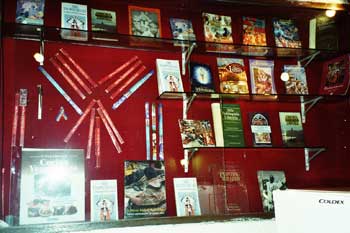
In Machu Picchu, the most visited site in Peru, there are no movie theatres; in the video store, I found hundreds of Bollywood films including Amitabh Bachchan's Sarkar and Delhi-6 along with the latest Hollywood films.
A cab driver, who took us to the ruins, asked me why Shah Rukh does not act in Hollywood films.
"He great man, best man than Leonardo and Brad Pitt," he said in his limited English. The guy is in his early 20s.
What was his favourite Bollywood film? 'Mohabbatein,' he said, adding that he sees it every month.
When did he see it first? Maybe eight years ago, he said, adding that his father gave him the DVD for his birthday. The film was released in 2000. 'Muio Bonito,' (very beautiful), he said. "I cry, I laugh, I dance."
A day before we leave Peru, a dark complexioned woman suddenly stopped us in a suburb of Lima and asked me in Tamil if I was from India, and if I was a Tamil.
I tell the woman, who happens to be a Tamil settled in Australia, that I understand Tamil, but my spoken Tamil is bad.
Never mind, she said in Tamil.
"I am home sick," she continued. "I have been travelling in Peru for 10 days and the only Tamil I heard till now was when I spoke to myself."
She said she heard Hindi music in the cabs ("They weren't playing it for me") and she heard street children trying to woo her with songs from Dil Se.
"But that film also had a Tamil version," she added. "Thank you for talking to me in Tamil."
Does she sing, I asked her. "A little bit," she said in Tamil.
She hummed a few lines from the Tamil version of the film.
A Peruvian man walking stops by us, "Roja," he said. "But I hear this song in another Hindu language." He is referring, of course, to the Hindi version.